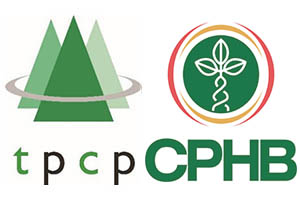Services offered to member companies of the TPCP include the following:
Insect pest and disease diagnostic services
Diagnostic services of the TPCP function through foresters submitting samples to the programme for analyses. Such samples are usually received after discussion between research staff and the foresters concerned, so that appropriate material is submitted. Identification of insect pests and pathogens are conducted using state of the art techniques from plant tissues, soil and water samples. Potential pathogens are often also tested for their ability to cause disease. An extensive reference fungal culture collection including tree pathogens collected in South Africa during the course of the past 20 years is also maintained, such that comparative studies and pathogen variation can be studied in the longer term. Insect pests are also identified where possible, or sent to experts for identification in the case of uncommon or new pests. Advice is provided to foresters based on these investigations and identifications.
Contacts for the diagnostic clinic.
When sending samples to the diagnostic clinic, please follow the instructions for sample preparation carefully and complete the submission form providing as much detail as possible about the problem.
Online submission of the FABI Diagnostic Clinic: Sample Information Sheet
A research programme focused on pests and diseases of priority to members
Research on pests and diseases of pine, eucalypts and wattle is conducted by postgraduate students together with permanent staff of the TPCP in modern laboratories specifically designed and equipped for tree protection research. Modern equipment for basic plant pathology and entomology research, as well as state-of-the-art DNA-based technologies, are used in an effort to produce world class results. Research includes the identification of new pests and pathogens, as well as studies on the biology these organisms to inform and guide management strategies to avoid losses. For example, through determining periods of spore release in Sphaeropsis sapinea, it has been possible to provide advice on suitable times for pruning of pines.
Other priorities are to develop and implement techniques for rapidly screening tree species and clones for resistance to disease. Screening techniques include inoculation under greenhouse and field conditions, but also various physiological and molecular techniques. Research into a variety of disease control strategies including cultural, chemical and biological control also forms a significant part of this programme.
All scientific data generated are published in peer-reviewed academic journals. These publications are all listed on the FABI website, and pdf's can be requested from any of the authors involved.
Monitoring of pests and diseases to gain a perspective of their relative importance
An important component of the TPCP is to monitor pest and disease development in plantations, in permanent sampling plots and through country-wide surveys. Data derived from these studies ensure the early discovery of new pests and diseases and also lead to a long term perspective on the importance of various pests and diseases.
Education of field foresters and students
Regular training courses for field foresters are provided and these ensure that knowledge and technology derived from research in the TPCP is transferred to the plantation level. In addition, forestry students are provided with lectures in the field of tree protection. Postgraduate students undertaking research in this field also ensure long term capacity building in this field.







































